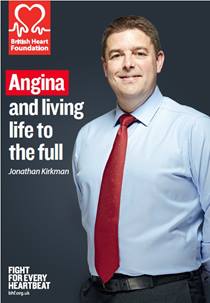Dr Sukhjinder Nijjer
Consultant Cardiologist
Expert in Coronary Heart Disease
Coronary Heart Disease
The Risk of Coronary Heart Disease (Atherosclerosis)
Heart Disease is a common condition in which a fatty substance – called atheroma or plaque, builds up within the heart (coronary) arteries. As the atheroma builds up, it deprives the heart of enough nutrients and oxygen. This can then cause health related problems – the main are angina, heart attacks and heart failure.
Atheroma can build up slowly over time (causing angina), or can rupture and expand suddenly (causing unstable angina). If a clot forms on top of the atheroma, this will cause a heart attack.
This page will discuss:
- The heart arteries – known as the Coronary Arteries
- Atherosclerosis
- The risk factors for coronary heart disease
- The symptoms of coronary heart disease
- How coronary heart disease is diagnosed
- How coronary heart disease is treated

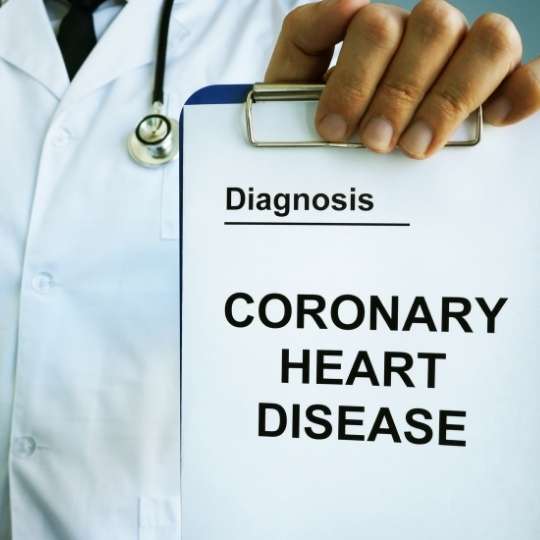


The Heart and it’s Arteries
The heart is a pump made of a special muscle, which delivers blood to the rest of the body. It has to nourish itself through it’s own arteries – called the coronary arteries.
There are two principle coronary arteries – but the left coronary artery divides into two vessels almost immediately. This means we often think of three main coronary arteries. The two on the left side are called the Left Anterior Descending (LAD) artery and the Left Circumflex Artery (called the LCx). There is one the right side – called the Right Coronary Artery). There are many other branches, all of which have different names.
There is a special name for the beginning part of the left coronary artery – it is called the Left Main Stem (LMS) and this is critical part of the coronary arteries. Blockages in the left main stem require special additional treatments.
The coronary arteries are small, often starting around 4-5mm in diameter, but can be as small as 2mm. These arteries give rise to the microcirculation – these are not visible to humans on our usual heart tests.
If there is a problem with the heart arteries, it means all of the heart muscle that is supplied by that artery, is in jeopardy.
Atherosclerosis
Atherosclerosis is a name of the process of plaque or atheroma build up. It is a complex process that involves inflammatory cells, cholesterol and other fatty substances and calcium.
The heart arteries normally have a very smooth lining with no narrowing. However, the lining is very sensitive to any form of injury. There are many things that can trigger injury – and this includes smoking cigarettes, having very high blood pressure or having diabetes.
As soon as there is injury to the artery lining, the body tries to heal the damage. This means inflammatory cells move into the lining of the heart artery. At the same time, blood cholesterol and other fatty substances will start to stick to the injured parts of the heart arteries.
The inflammatory cells will try to remove the cholesterol by ingesting the fat – but it makes the inflammatory cells defective and unable to do their tasks. This leads to more inflammatory cells to attempt to rescue the situation, but each new set of cells will end up ingesting the cholesterol and so also become defective.
As layers and layers of cholesterol and cells get laid down, the initial area of artery damage gets covered over, but the size of the coronary artery lumen becomes reduced. This is akin to the pipes in your home becoming clogged up with food debris and reducing the flow through the pipes.
When there is a reduction in blood flow, this means the heart muscle supplied by the artery does not get the nourishment it needs. This is not a problem when you are resting and the heart beat is steady. When you try to exert yourself and the heart rate goes up, then the blood supply is not sufficient. This will then cause symptoms of chest tightness called angina. This occurs when the process of atherosclerosis builds up slowly. If it builds quickly, this can manifest as angina that rapidly gets worse over a short period of time (unstable angina).
In some situations, the plaque can rupture suddenly. If this occurs, blood will stick to the collagen and cholesterol material that is exposed. Once this occurs, a clot will rapidly build up in the artery. Because heart arteries are small, even a very small clot can block the artery completely. This is called a heart attack and it is essential the heart artery is opened as quickly a possible using angioplasty.
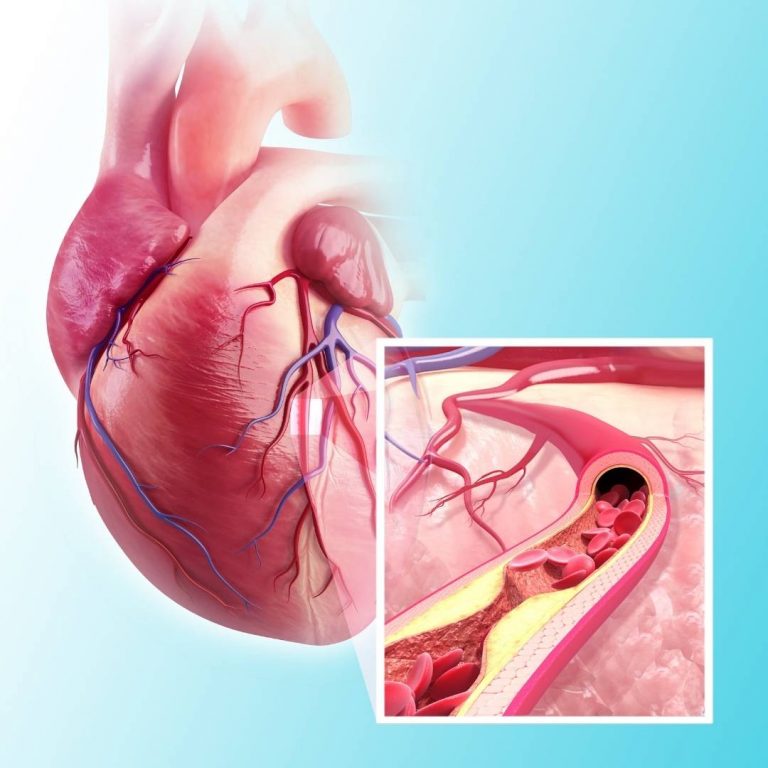
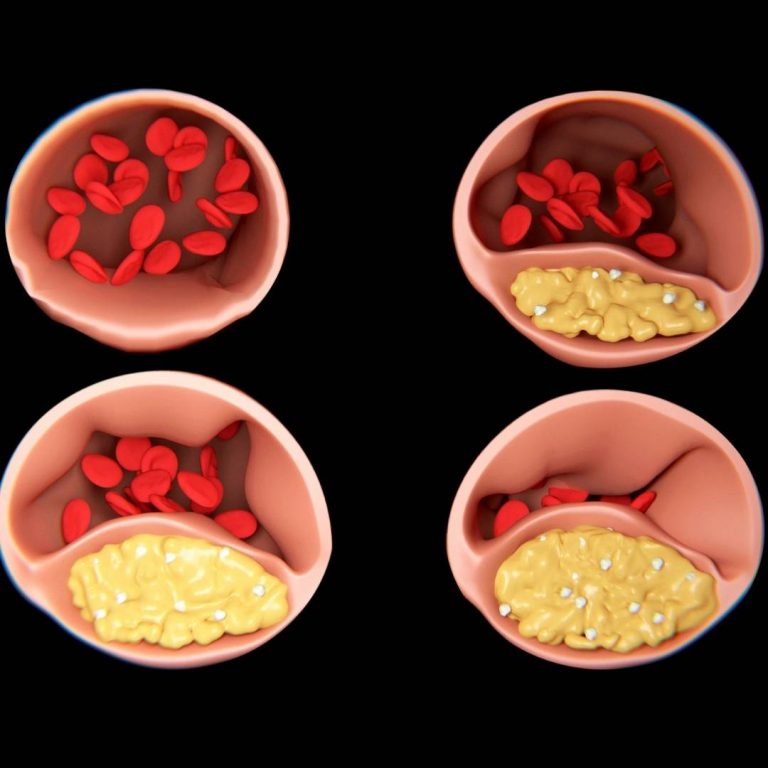
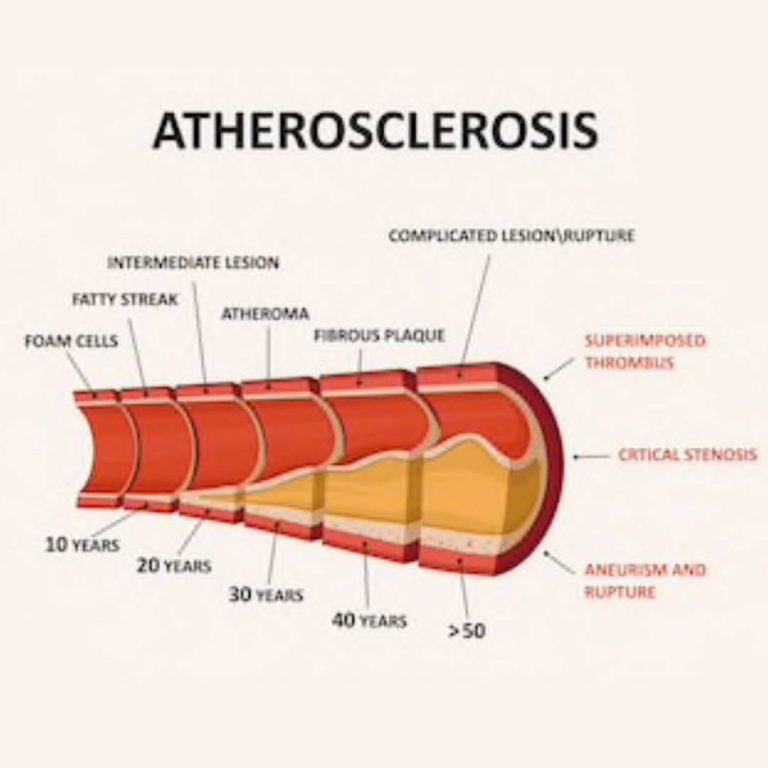
What are the risk factors of coronary heart disease?
There are many risk factors for developing coronary heart disease.
The factors that you cannot control are:
- Age: Coronary heart disease increases as we get older as it is often a slow and progressive condition. Older people are much more likely to have severe blockages and, as they have developed over time, these narrowings tend to be heavily calcified and can be difficult to treat using traditional angioplasty techniques. Dr Nijjer may need to use complex calcium modification techniques such as rotablation or shockwave balloons to deal with this.
- Gender: Men are more likely to develop heart disease than women and this has been shown through repeated studies. However, after the menopause, a women’s risk of coronary heart disease rises significantly such that it is similar to men. Women often present to Doctors later than men, and statistics shows that Doctors are less likely to offer testing to women. Dr Nijjer strives to ensure that both men and women are treated equally.
- Ethnicity: Ethnic background can be a strong determinant of coronary heart disease. People with a South Asian background (India, Pakistan, Bangladesh, Sri Lanka) have much higher rates of coronary artery disease compared to White Europeans.
- People with African or African Caribbean have higher rates of hypertension (high blood pressure) and so have higher rates of stroke compared to other groups. Both these groups have higher rates of Type 2 Diabetes – high blood sugars due to insulin resistance, and this is a strong risk factor for coronary heart disease.
- Family History: If you have heart disease in your family, this can significantly elevate your risk. Coronary artery disease is ‘polygenic’ – meaning there are many different genes responsible for it.
- Your family may have genes that mean your cholesterol levels or blood pressure levels are higher than others. There can be subtle differences in how your body processes the various components of atherosclerosis. All of these different processes come together to increase your risk and it can be difficult to state how much of your risk is driven by your underlying genes.
- It is important to know which family members have had heart attacks or strokes, and the age that these events first occurred. You have a strong family history if your father or brother was under the age of 55, or your mother or sister were under the age of 65.
- There are a number of inherited conditions in which a single or a group of well-known genes are responsible. An important condition is Familial Hypercholesterolaemia – where there is defect in the receptors that process cholesterol. if you have the defective gene, you will develop high cholesterol levels from childhood and so have an exceptionally high risk of coronary heart disease. Specialist treatments will be necessary.






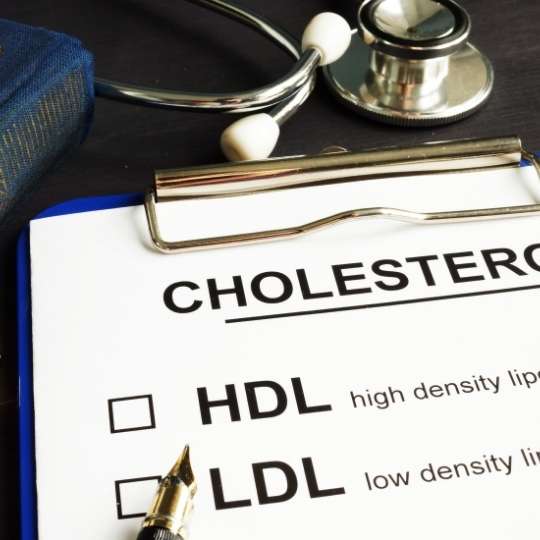
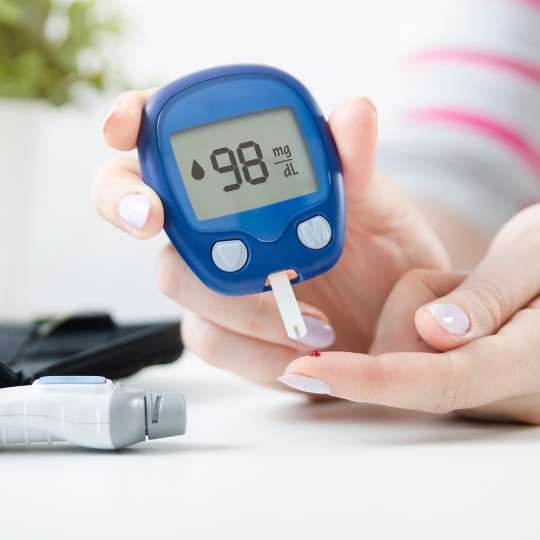


The risk-factors that you can improve:
- High Blood Pressure: Blood pressure does not cause symptoms but is a major determinant of coronary disease around the world. Your blood pressure can be elevated for some time before it is discovered, and often people are in a state of denial and decline appropriate treatments. High blood pressure means the pressure in the heart arteries is very high and this is a source of injury to the artery lining. This triggers the process of atherosclerosis causing a progressive narrowing of the heart arteries. Other arteries will also be affected, including the small arteries in the brain – increasing the risk of both ischaemic and haemorrhage stroke.
- High Cholesterol: Cholesterol is a type of fat that is present in your blood and is naturally made by your liver. It is used by the body for various processes but if you have excess levels it can cause health problems. High blood cholesterol levels have been repeatedly shown to be a factor in developing coronary heart disease.
- High cholesterol levels can be triggered by not being active enough, eating excessive levels of saturated fat and being overweight – particularly around the middle part of the body.
- Blood cholesterol is made up of a number of different molecules, some of which are highly atherosclerotic. It is worth measuring your full cholesterol profile – which will include your total cholesterol, HDL (so-called good cholesterol), LDL and triglycerides.
- HDL (high-density lipoproteins) is used by the body to recycle cholesterol not used by the rest of the body – it collects cholesterol from cells and returns it to the liver for processing.
- LDL (low-density lipoproteins) and VLDL (very-low density lipoproteins) are ‘bad’ cholesterol. These molecules tend to stick to heart arteries and are involved in the process of atherosclerosis. In patients who have confirmed coronary heart disease or those who have had a heart attack, we aim to get the LDL levels as low as we can get them.
- Triglycerides: Triglycerides are another type of fat which is typically used for storing fat in the fat cells. Very high triglycerides also causes a high risk of coronary heart disease.
- Before 2014 we asked patients to fast prior to testing, but modern tests can be performed without fasting. If your Triglyceride levels are very high, Dr Nijjer will ask you to repeat your cholesterol levels blood test as a fasted test.
- Diabetes : Diabetes is a condition in which your body is not able to process blood sugar in the normal way. This means blood sugar levels become very high and this interacts with high cholesterol levels and high blood pressure to significantly accelerate coronary artery disease.
- There are two main types. In Type I, which mainly occurs in young people, they have defective production of insulin and so have critically high blood sugar levels. In Type II, the more common type, insulin is still produced but your body becomes ‘resistant’ to it.
- Type II diabetes is rapidly increasing in the world and has been shown to dramatically increase the risk of heart disease. Whilst it is a medical illness, there is a great deal that patients with diabetes can do to minimise their risk. Having excellent blood sugar control is key. Weight loss, regular exercise, blood pressure and cholesterol control are essential. It is imperative that those with diabetes do not smoke as the combination is highly atherogenic – cause coronary artery disease.
- Smoking : smoking cigarettes increases the risk of coronary heart disease through a number of mechanisms. Cigarettes contain a lot of chemicals and many cause direct injury to the lining of the heart arteries. This injuring then triggers the process of atherosclerosis – and promotes bad cholesterol to stick to lining and form atheroma. Smokers who have high blood pressure, diabetes or high cholesterol have a dramatic increase in their risks of coronary heart disease.
- There are a number of chemicals in cigarettes which contribute to coronary artery disease:
- Carbon Monoxide: This is a poison that binds to haemoglobin in you red blood cells. This prevents oxygen from being carried by the cells and so deprives your body’s cells getting the oxygen they need.
- Nicotine: Nicotine is a neurotransmitter found in the nerves and brain. It contributes to the addictive qualities of cigarettes and vaping products. It causes coronary arteries to constrict (tighten) and develop vasospasm. This can be a trigger for coronary artery disease. If there is coronary artery disease already present, then constriction of the artery around the narrowing can increase the risk of angina and a heart attack.
- There are a number of chemicals in cigarettes which contribute to coronary artery disease:
Modern day Risk Factors for Coronary Artery Disease
Poor Diet: Poor diets which include foods which are high in fat, salt, sugar and cholesterol all increase the risk of coronary heart disease. Diets that have a lot of processed foods will increase your risk and you should make efforts to replace this fresh vegetables and reduce intakes of fried foods.
Lack of Physical Activity : Physical activity is essential to maintain our health. However, modern life means we are often at desks for long periods and we commute to work in cars or public transport. When we return home after a hard day at work, it is common to rest on the soft and watch television or Netflix. It is very easy to become sedentary. Being inactive causes blood cholesterol levels to rise and contributes to high blood pressure. It also contributes to developing insulin resistance and Type II diabetes. Taking regular exercise can reduce your risk of heart disease by around third.
Air Pollution: Air pollution is incredibly common in major cities such as London. The air contains tiny particles which cannot be seen but can create a haze that can make the sky less clear. Diesel and petroleum fuels contribute to this, as do coal power stations. This means the air is full of nitrogen dioxide, sulphur dioxide and carbon monoxide. There is often dust and other particulate matter such as pollens. These chemicals can affect the heart and the circulation. There is evidence to suggest that air pollution can trigger the artery damage that starts the process of atherosclerosis. It alters the movement of the heart arteries and makes the blood more likely to clot. All of these factors can contribute to coronary heart disease, heart failure, stroke and lung disease. It is important to reduce your exposure to air pollution and to compensate for the damage that it can cause by being physically active, eating well with reduced intake of processed foods. If it is feasible, it may be worth living further away from major roads and factories. On days with high air pollution, it is worth exercising indoors, or to undertake outdoor exercise in more rural areas. Air pollution levels can be checked on the Government’s UK-AIR website.
Stress: Stress is a huge part of modern life and there is increasing research data that work related stress contributes to coronary heart disease. Mental stress, due to work, family matters or financial concerns, places the body under strain and causes elevated blood pressure and poor dietary habits. People often comfort eat, may drink too much alcohol and retreat from physical activity. In the short term, stress can push you to perform to a higher level. The body needs stress to trigger an adrenaline surge and drive increased activity. However, prolonged stress will impact your health. Your blood pressure will become significantly elevated over a period of time and this will contribute to coronary heart disease. How you cope with stress is a key component of your future health. Reducing alcohol and coffee, increasing physical activity and having time to integrate mindfulness or meditation into your schedule is essential.







What are the symptoms of coronary heart disease?
What are the symptoms of the risk of heart disease? It depends on how quickly the atherosclerosis process builds up. In patients with a slow progressive build up, you may feel progressive angina. In others, you may have no symptoms at all until there is heart attack.
Common symptoms are:
- A feeling of chest tightness, pains or pressure
- Feeling of pressure or heaviness in the arms on exertion
- Breathlessness, particularly on exertion
- Palpitations caused by serious arrhythmias
- Dizzy spells or blackouts on exertion
- Nausea on exertion
Not everyone will have all of these symptoms and in some, the symptoms can be very vague. In others, the symptoms can be very severe and come on very quickly. It is important to reflect on your symptoms and think about how they feel for you.
Sudden episodes of severe chest pressure, with pain moving into the arm, sweating and nausea all together, can indicate a heart attack. It is important to seek medication attention straight away.
Atherosclerosis can be a silent condition and there are many patients who have severe coronary artery disease without any typical symptoms. It is important to identify the condition of coronary heart disease and perform a risk assessment. Patients with coronary heart disease should be treated according to their risk and the likelihood of heart attacks in the coming years.
Screening can help identify coronary heart disease but not all tests or investigations give a complete picture. You may require multiple tests to identify the problem and whether it is impacting on your heart at present.
What tests do I need if I have a risk of heart disease?
Dr Nijjer will take a detailed assessment of your personal history and your family history of heart disease. Before the appointment, take the opportunity to speak to family members to understand their condition and what age they were when it first diagnosed. You may have had a health screen with your insurance company or have seen your GP to have blood tests. Please bring these results with you as this can streamline your assessment. If they are not available, Dr Nijjer will perform advanced tests to understand your risk.
Dr Nijjer will use the latest risk calculators to help predict your long-term risk of coronary heart disease and the risk of major cardiac events such as heart attack. Risk calculators help estimate your risk but are based upon population risks and therefore don’t apply specifically to an individual. However, they do help us understand your risk and help stratify the treatment options available to you.
After a detailed consultation and examination, Dr Nijjer will organise electrocardiogram (ECG) test. This is a rapid test and involves taking a quick snapshot of the heart’s electrical signals. This test is essential as it gives us information about the current state of the heart, but alone, it cannot exclude important coronary artery disease. There are patients who have very severe coronary disease but their ECG can be within normal limits.
Dr Nijjer may also organise an echocardiogram – this helps assess the state of the heart muscle. In patients with severe coronary heart disease, the heart muscle can become impaired and weakened. This an ultrasound based test which takes 30-45 minutes. Jelly will be placed on your chest and a probe will use ultrasound to visualise the heart directly.
A CT Angiogram (CTCA) is a non-invasive test that helps Dr Nijjer to visualise your heart arteries using CT technology. This will enable us to measure both the calcium score – the amount of calcium build up in the heart arteries, as well as assess for soft atheroma. The calcium score is a highly effective tool to risk stratify your risk of future heart attacks. Patients with elevated calcium scores are often better off on medications to control cholesterol levels. The CTCA helps to visualise that atheroma and assess the narrowings in the arteries with greater precision than a calcium score.
Invasive coronary angiography remains the gold standard way of identifying coronary heart disease. This is an invasive procedure, performed through the hand artery, and involves passing a thin catheter into the heart arteries. This approach allows us to fully assess your heart arteries and measure the blood flow within the vessels during the same procedure. Dr Nijjer is an internationally recognised expert in performing angiography and using pressure-wire technology to measure coronary artery blood flow.
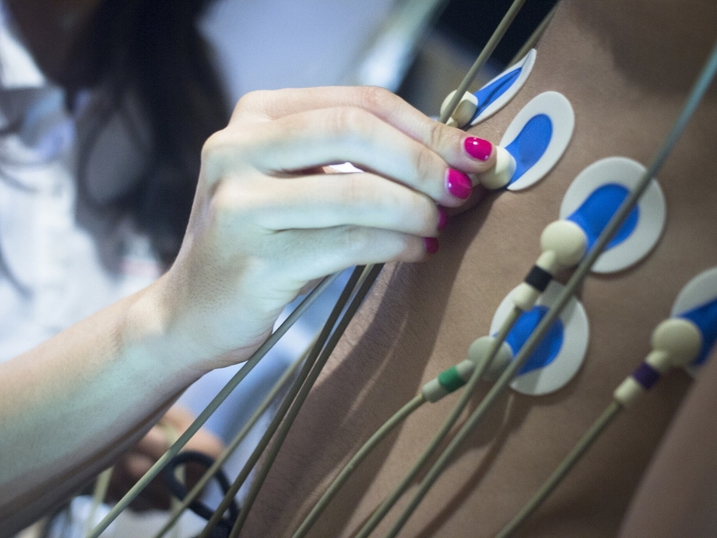

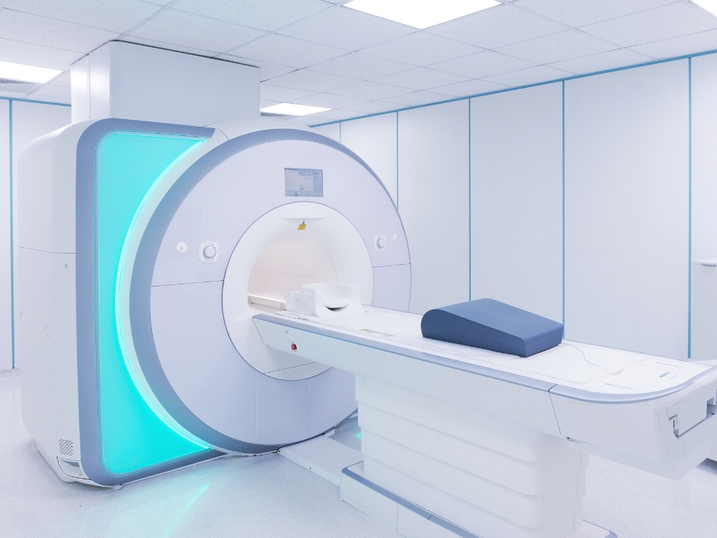


What are the treatments for coronary heart disease?
The treatment for coronary heart disease will depend on the severity of disease that you have. You will be told of your precise risk and be asked to alter your lifestyle. Many patients will also require medications.
There are many different medications but common ones include:
- Aspirin 75mg: Low-dose aspirin is used in patients with established heart disease and, in particular if you have had a heart attack already. Aspirin reduces the activity of platelets – a key component of blood that makes clots. This means should the atheroma or coronary atherosclerosis rupture, the aspirin reduces the size of the clot that forms and so, reduces the chance of a heart attack.
- Cholesterol lowering drugs: patients with high cholesterol, not reduced by exercise and dietary change, and if their risk of heart attack over the next 10 years is over 10%, will be offered a Statin medication. Statins are highly effective medications that have been well tested over several decades and are known to be safe. They were developed from a natural product – red yeast rice lowers cholesterol as it contains a substance that was developed into Statins. A common statin is Atorvastatin 20mg or 40mg. Patients who have had a heart attack will need higher doses.
More Information from the British Heart Foundation
More information is available on the British Heart Foundation (BHF) website.
The page on coronary heart disease can be found here.
Click here to download a PDF
Help Your Heart
If you have any concerns regarding your heart health, then please seek a referral to Dr Nijjer.
Call the Team: Monika, Amy, Charlotte, Erin or Grace:
0203 9838 001
Email: Secretary@DrNijjer.com
Dr Nijjer can be seen at :
68 Harley Street, London, W1G 9QP
He also practices at Cromwell Hospital, Wellington Hospital, BUPA Clinics, BMI Syon Clinic as well as Imperial Private Healthcare.

